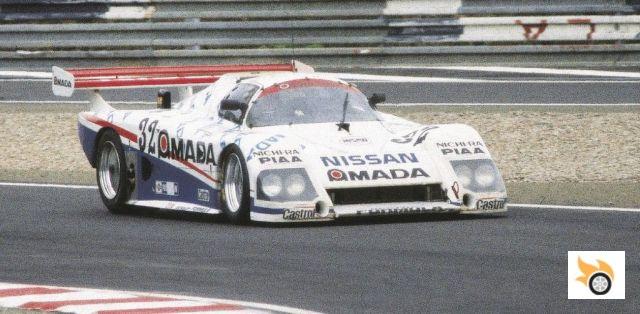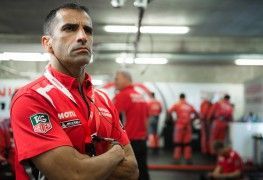You will remember from yesterday's text that Nissan had decided to dispense with its Datsun brand, and to call its cars under its own brand name from the mid-eighties onwards. The decision was taken in 1981, and while in the United States the GTP ZX-T project was supported to conquer the IMSA GTP championship, in Europe another strategy had to be found. That was to try to win a place in the FIA World Endurance Championship, which was run under Group C regulations.
Nissan's first idea to compete at Le Mans was to convert one of its racing cars from the Japanese silhouette championship to Group C specifications.
The "super silhouette" championship, known as the Fuji Super Silhouette Series, was in full swing in Japan at the time. It had been held since 1979, around FIA Group 5 cars, as "heavily modified production cars", which in fact had little or nothing to do with the road cars to which their aesthetics referred.
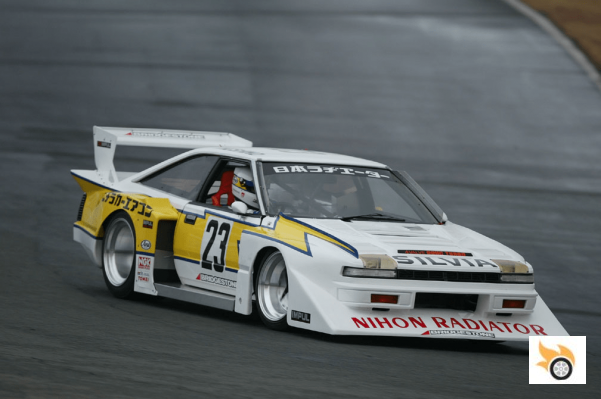
Nissan made its debut in the championship with the Silvia silhouette in 1981. Starting from a "conventional" Silvia S110, Nissan cut the chassis and replaced it with a tubular structure, while developing a Mooncraft bodywork with huge spoilers to improve aerodynamic support. The heart of the coupe was replaced. As a base the Nissan Violet A10 block was taken, the LZ20, a two-liter engine displacement divided between four cylinders, which was added supercharging by a turbocharger AirResearch T05B, a Lucas mechanical injection system and a huge intercooler. Thus, the block delivered 570 horsepower to the rear wheels. Reliability needn't have been an issue, as it was the engine that had propelled Nissan to victory with its Safari Rally cars on several occasions.
The Silvia S110 was impressing people in Japan, and Nissan decided to use the base car as a promotion for other Nissan models. Sharing chassis and mechanicals, the Bluebird Turbo silhouette and Skyline Turbo silhouette were born in the following seasons, creating what would become known in Japan as the "Nissan turbo armada".
In the early 1980s Nissan fielded three Super Silhouettes in the Japanese Group 5 championship, with huge spoilers and turbocharged four-cylinder engines.
With local success guaranteed, we come back to what I told you above: Nissan wanted to compete in Europe, and had these cars in their local market, achieving victories. Porsche's success with the Group 5 935s encouraged the Japanese to attempt an assault on Le Mans with the Skyline Turbo silhouette, but by the time they tried to plant it in Europe, the championship had evolved to Group C, and the car was clearly slower than the Porsche 956, so the company stopped the attempt and never made an appearance at Le Mans with it.
A completely new plan had to be drawn up, and the same approach was used for the GTP ZX-Turbo: to have a proven chassis-body supplier, and to equip it with an "in-house" engine. The supplier for the selected chassis was March.
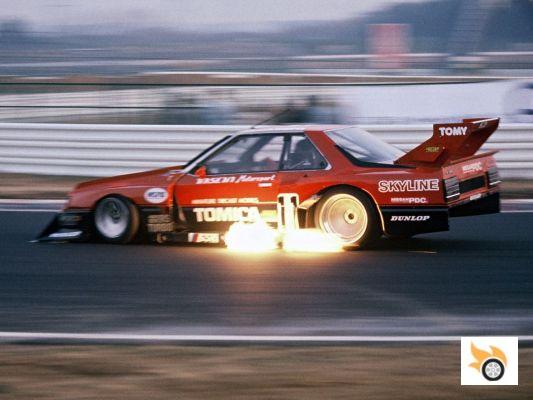
Nismo's original idea was to use one of their super silhouettes at Le Mans, but they lacked speed.
The British company had been working since 1982 on a series of Group C and GTP prototypes that were performing well, thanks to a design by the brilliant Adrian Newey. The original car, known as 82G, was an evolution of the aluminum monocoque used in the BMW M1C that Newey had designed for the Bavarian brand, but quickly abandoned by the same. The project would evolve to the March 83G, and Nissan would acquire a chassis to which it implanted the LZ20B/T engine of its silhouette, creating what they would baptize in the same year as Silvia 83G.
Between 1983 and 1985 the car would successively dispute the 1000 kilometers of Fuji and Suzuka, with not very encouraging results, mixing withdrawals due to engine problems with lack of competitiveness against the push of the Porsche 956. To be competitive, Nissan put more money in March, and was made with the 85V and 86V chassis with the idea of taking the start at Le Mans 1986, the first participation of the company in the most important 24 Hours of the planet.
Nissan bought an 83G chassis from March and renamed it Silvia 83G and fitted it with the Silhouette engine, using it in the Japanese endurance events of the World Endurance Championship against the Porsche 956 and co.
To solve the problem of lack of performance and reliability, Nissan took the GTP ZX-T engine, the VG30T derived from the Nissan 300ZX street car, and installed it with its 680 horsepower in both chassis. The 85V was a rather discreet aerodynamic evolution of the 83V, while the 86V was a much more modern car, but less proven. The 85V also arrived at Le Mans with an important victory behind it, after having dominated with this new engine (it had debuted first with the less reliable four-cylinder) the thousand kilometres of Fuji in 1985, helped by a downpour that the European manufacturers could not withstand because they did not have the right tyres.
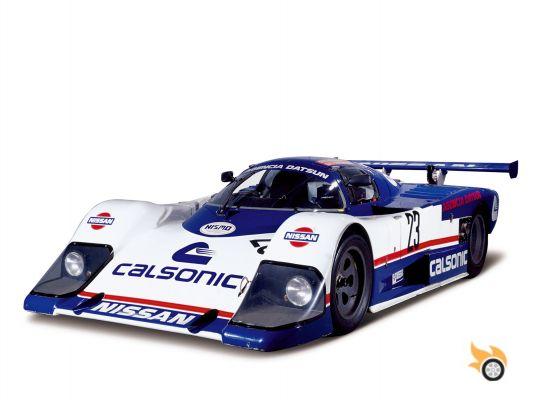
The new 86V chassis promised much, but showed youthful problems when paired with Nissan's six-cylinder V6.
The 86V was a chassis that March had developed with money from Nissan and BMW. The Bavarian company intended to use the car in the North American IMSA GTP championship, while Nissan was going to focus its efforts on European events.
The 86V was much more competitive in Le Mans qualifying than its 85V sibling, but in the race the engine-chassis pairing didn't work, and a vibration in the six-cylinder began to develop that eventually took the car out of the race. The R85V was left to defend the honor of the beginners, and it achieved it with a respectable 16th place, having lapped ninth in certain phases of the race, but 83 laps behind the winning Porsche 962.
The 85V would finish 83 laps behind the Porsche 962 winner at Le Mans.
Apart from the discreet result at Le Mans, which would encourage the company to redouble its efforts in future seasons, Nissan would keep the 85V active in local races, where it would begin to install an evolution of the VG30T engine that would eventually reach production. This was a twin turbocharged variant.
The idea was to mount two smaller turbochargers, which would partly cure the lag problem of the original engine, while providing more power. The result was brutal: more than a thousand horsepower.
